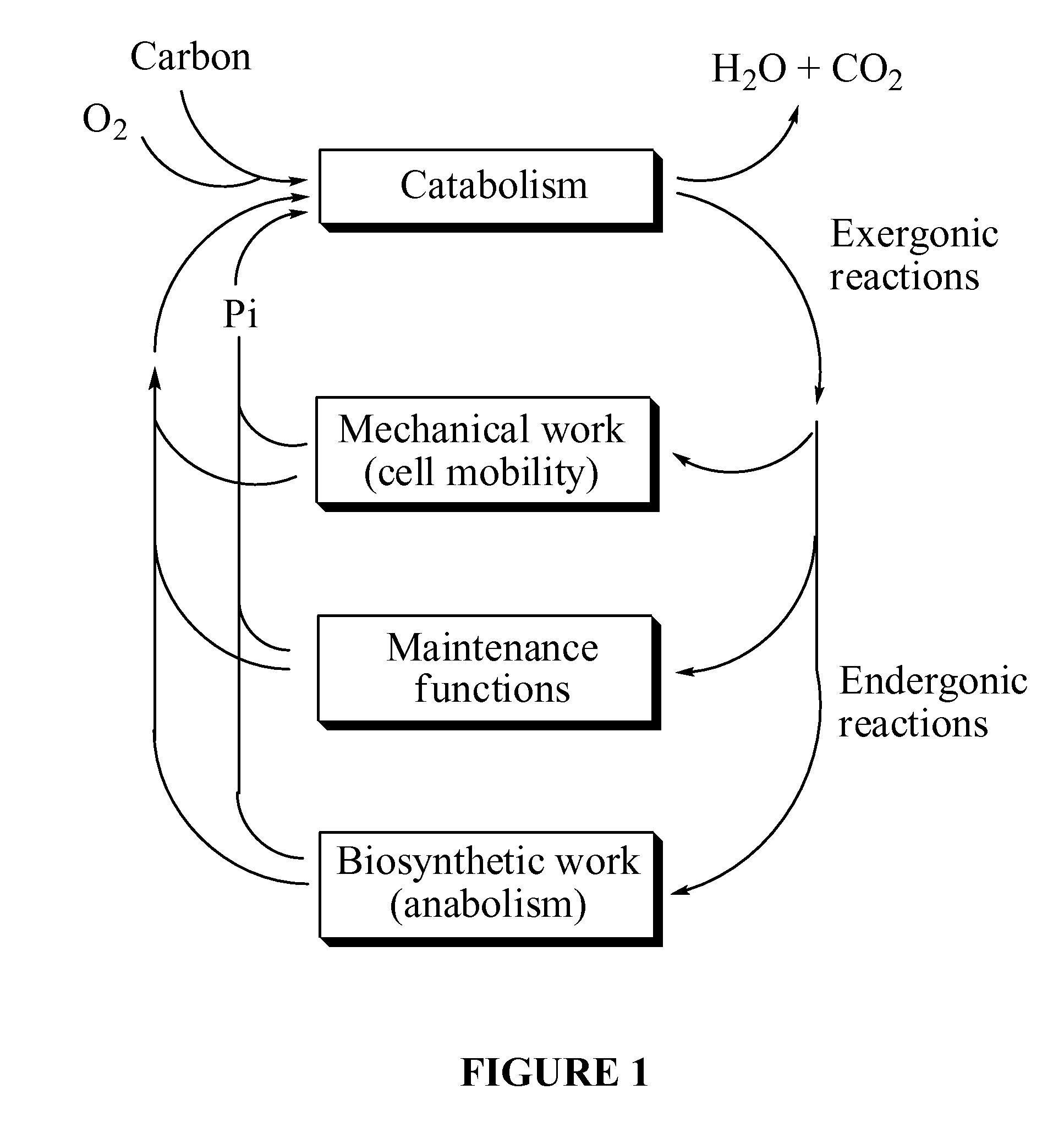Altering metabolism in biological processes
a biological process and metabolism technology, applied in the field of surfaceactive agents, can solve the problems of store nutrients, inability to fully absorb nutrients, etc., to achieve the effect of reducing the amount of aeration, enhancing the production of low molecular weight proteins of saccharomyces cerevisiae, and reducing the production of activated sludg
- Summary
- Abstract
- Description
- Claims
- Application Information
AI Technical Summary
Benefits of technology
Problems solved by technology
Method used
Image
Examples
example 1
[0064]Saccharomyces cerevisiae was cultivated under aerobic conditions familiar to those skilled in the art, using molasses as the primary nutrient source. Additional nutrients can include diastatic malt, diammonium phosphate, magnesium sulfate, ammonium sulfate zinc sulfate, and ammonia. The yeast was propagated under continuous aeration and agitation between 30 degrees and 35 degrees C. and a pH range of between 4.0 and 6.0 until the yeast attained a minimum level of 4% based on dry weight and the yeast was then subjected to low food-to-mass stress conditions for a period of 4 hours. At the conclusion of the fermentation process, the yeast fermentation product was centrifuged to remove the yeast cells and the supernatant was then blended with surface-active agents and the pH adjusted between 3.8 and 4.8 for stability.
example 2
[0065]Saccharomyces cerevisiae was cultivated utilizing the conditions found in Example 1. At the conclusion of the fermentation process, the fermentation product was heated to 50 degrees C. for eight hours so as to induce the heat shock response and perform autolysis on the yeast cells, thus releasing the heat-shock proteins into the growth media. At the conclusion of the autolysis process, the yeast fermentation product was centrifuged to remove the yeast cells and the supernatant was then blended with surface-active agents and the pH adjusted between 3.8 and 4.8 for stability.
example 3
[0066]Saccharomyces cerevisiae was cultivated utilizing the conditions found in Example 1. At the conclusion of the fermentation process, the fermentation product was heated to 40 degrees C. for two hours so as to induce the heat shock response and perform autolysis on the yeast cells, thus releasing the heat-shock proteins into the growth media. At the conclusion of the autolysis process, the fermentation product was passed through a Manton-Gaulin High Pressure Homogenizer at 7000 psi for three cycles, after which the yeast fermentation product was centrifuged to remove the yeast cell debris and the supernatant was then blended with surface-active agents and the pH adjusted between 4.0 and 4.6 for stability. Formulae for the three examples are as follows:
TABLE 1% By WeightMaterialExample 1Example 2Example 3Non-autolysed Ferment64.50%Autolysed Ferment64.50%Disrupted Cell Ferment64.50%Ethoxylated Linear Alcohol-726.60%26.60%26.60%mole ETOAlkyl Ether Sulfate, Sodium8.90%8.90%8.90%Salt...
PUM
| Property | Measurement | Unit |
|---|---|---|
| Temperature | aaaaa | aaaaa |
| Temperature | aaaaa | aaaaa |
| Temperature | aaaaa | aaaaa |
Abstract
Description
Claims
Application Information
 Login to View More
Login to View More - R&D
- Intellectual Property
- Life Sciences
- Materials
- Tech Scout
- Unparalleled Data Quality
- Higher Quality Content
- 60% Fewer Hallucinations
Browse by: Latest US Patents, China's latest patents, Technical Efficacy Thesaurus, Application Domain, Technology Topic, Popular Technical Reports.
© 2025 PatSnap. All rights reserved.Legal|Privacy policy|Modern Slavery Act Transparency Statement|Sitemap|About US| Contact US: help@patsnap.com


